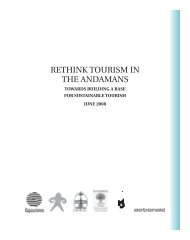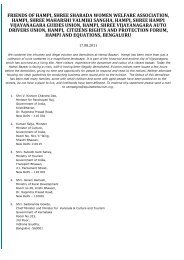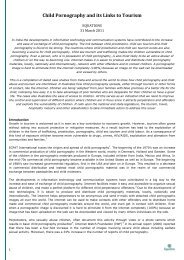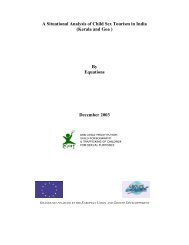Nilgiris Biosphere Reserve - Equitable Tourism Options
Nilgiris Biosphere Reserve - Equitable Tourism Options
Nilgiris Biosphere Reserve - Equitable Tourism Options
Create successful ePaper yourself
Turn your PDF publications into a flip-book with our unique Google optimized e-Paper software.
II. National Biodiversity Strategy and Action Plan (NBSAPJ of India<br />
Background ofthe NBSAP Process<br />
The National Biodiversity Strategy and Action Plan (NBSAP) of India is one<br />
of the world's largest environment/development planning exercises. A<br />
project of the Union Ministry of Environment and Forests (MoEF), the<br />
ongoing NBSAP aims to produce a series of planning documents relating to<br />
ecological security and livelihoods of people most dependent on natural<br />
resources. The project is funded by the Global Environment Facility<br />
through the United Nations Development Programme (UNDP). The<br />
project is undertaken as a commitment under the Convention on Biological<br />
Diversity (CBD).<br />
The Convention on Biological Diversity was negotiated between 1987 and<br />
1992 under the supervision of the United Nations Environment<br />
Programme. The preparatory work for formulating the Convention was<br />
done by IUCN The World Conservation Union and the Food and<br />
Agricultural Organisation. The Convention was formally adopted by the<br />
member states on 22 May 1991 in Nairobi and it was opened for signature<br />
at the United Nations' Conference on Environment and Development (Rio<br />
Summit) held at Rio de Janeiro between 3'd and 14th June 1992. The<br />
Convention was first signed by 157 states at the Rio Summit and then by<br />
another nine states. As per Article 36 of the Convention, thirty ratifications,<br />
acceptances, approvals or accessions wre needed for the Convention to<br />
be enforced and this took place on 29 December 1993. By 31 January<br />
1995, 179 states had signed the Convention and 102 states have ratified,<br />
acceded or approved it. India ratified the Convention in 1994. The primary<br />
focus of the Convention is to provide a broad global framework for<br />
developing measures for the conservation of biodiversity_ The Convention<br />
expects the signatory states to develop necessary measures within this<br />
framework, which will facilitate the achievement of the objectives that the<br />
Convention sets out. The states are to design and develop a national<br />
strategy for the conservation of biodiversity and suitable use of biological<br />
resources.<br />
Article 6 of CBD stipulates that each Contracting Party develops National<br />
Strategies, Plans and Programmes forthe conservation and sustainable<br />
<br />
lm\<br />
N'ilagiris : Fading Glory 50
















